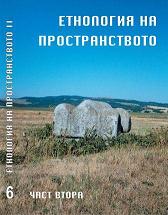Мотив „журавли и пигмеи” в контексте представлений о мироздании в мифологиях Северной Евразии и Америки
“Pigmies and cranes” narratives in context of the early Northern Eurasian and American worldviews
Author(s): Yuri E. BerezkinSubject(s): Anthropology
Published by: Асоциация за антропология, етнология и фолклористика ОНГЬЛ
Summary/Abstract: First described by Homer, the myth about battles between dwarfs who live at the edge of the world, and the migratory birds who periodically attack them have been eventually recorded in Northern Eurasia (Baltoscandia, Eastern Mediterranean and the Caucasus, northern East Asia) and in North and in some parts of South America including Central Brazil. In North America the myth was especially popular along the Northwest Coast and in the Southwest. Sometimes the dwarfs are replaced with other creatures different from normal human beings (giants, ghosts, other kinds of birds) while insects, bats or even grasses and cooking pots can play the role of the aggressors. The existence of these stories in South America means that they could survive in natural environment very different from their original northern homeland. Together with the total lack of the “dwarfs and cranes” in Southeast Asia, Oceania, Australia and sub-Saharan Africa, the multiple independent emergence of this motif seems to be quite unlikely. Most of Eurasian versions come from ancient or medieval sources, and very few survived till the 20th century. They occupy a somewhat isolated place in folklore sharing few motifs with other tale-types and never integrated into the fairy-tales. Yriö Toivonen and some other scholars did notice the Eurasian – North American links but could not suggest for them any historical explanation. The areal distribution of Eurasian – American parallels suggests that stories based on the “dwarfs and migratory birds” motif must be known in continental Eurasia at the time of the peopling of the New World, i.e. in the Terminal Pleistocene. These stories reflect specific ideas about the structure of universe and were integrated into the corresponding world view along with some other motifs of different origin (the sky vault constantly moving up and down in respect to the earth). Being brought to the New World, the “dwarfs and cranes” motif was linked to other motifs which describe the peculiar biology of the primeval or living far away anthropomorphic beings (no anal or mouth openings, pregnant women cut open to extract child). The origins of the latter set of motifs are connected with the Indo-Pacific borderlands of Eurasia.
Journal: Годишник на Асоциация за антропология, етнология и фолклористика »Онгъл«
- Issue Year: 2007
- Issue No: 6
- Page Range: 88-108
- Page Count: 21
- Language: Russian
- Content File-PDF

